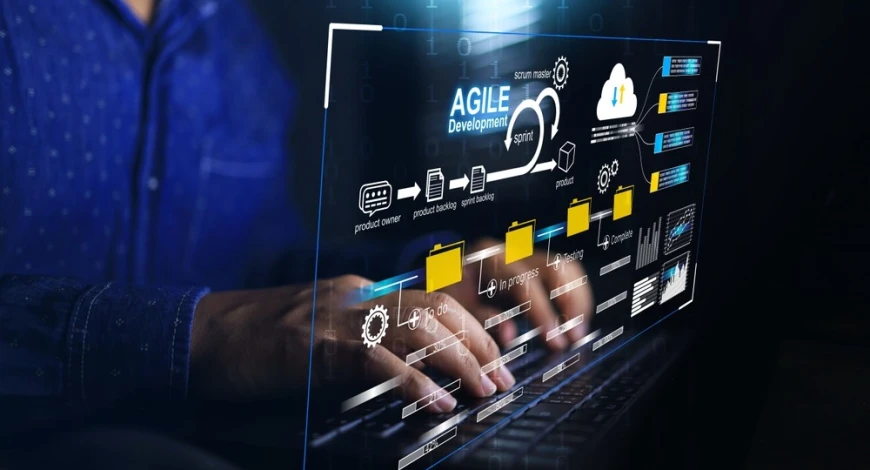The Era of AI and Automation in Startup Software Development
Software development processes in the startup ecosystem have undergone a radical transformation in recent years, driven by artificial intelligence (AI) and automation technologies. This transformation not only increases efficiency but also reshapes product development approaches, workflows, team structures, and competitive dynamics. MVP development cycles are now faster, product–market fit is more measurable, and technical processes are more predictable. This article provides a comprehensive roadmap on how early-stage startups can integrate AI and automation into their software development processes to gain a competitive advantage. Covering strategic context, technical architectures, security models, performance management, real use cases, ROI calculations, and more, it serves as a systematic guide especially for technical founders, CTOs, product teams, and software architects.
The New Paradigm in Startup Software Development
In recent years, startup software development processes had begun to approach natural limits due to the high demand for speed and flexibility. However, artificial intelligence, automation, LLM-based code generation, and autonomous pipelines removed these limits, creating a new paradigm. This paradigm enables teams to develop higher-quality products faster with fewer human resources. Development teams can now reduce operational workload and focus on higher-value problems. Critical processes such as code generation, test automation, root-cause analysis, data processing, architectural planning, and documentation are being enhanced by AI.
Strategic Value: How AI and Automation Benefit Startups
AI and automation provide startups with more than productivity gains; they also deliver advantages in sustainability, cost control, and product differentiation.
Strategic impact areas
- 3–8× increase in product development speed
- Developer productivity optimization
- Shortened sprint cycles
- Early-stage reduction of technical debt
- AI-based code auditing for standardized quality
- Lower error rates through autonomous test and CI/CD processes
- Data-driven decision-making for product–market alignment
- User behavior prediction with predictive analytics
For non-technical founders especially, AI-powered tools reduce barriers in the development process and enable faster iteration. For this reason, AI and automation have become essential for early-stage startup resilience.
Architectures: API, iPaaS/ESB, ETL/ELT, and Event-Driven Systems
In the era of AI and automation, startup technical architectures evolve away from classical monoliths toward more flexible, observable, and automation-friendly structures.
API Layer: REST, GraphQL and AI-Driven Services
The API layer is no longer just a data exchange layer; it has become an orchestration center for managing AI models.
- REST: Ideal for simple CRUD flows and high compatibility
- GraphQL: Optimized for front-end driven data queries
- gRPC: High-performance service-to-service communication
- AI inference endpoints: OpenAI, open-source LLM models
- Automated model deployment and versioning
iPaaS and ESB: Modern Integration Strategies
Integration costs are critical for startups. iPaaS platforms accelerate go-to-market even during the MVP stage.
- Rapid automation integrations with n8n, Make, Workato
- Webhook-first architectures
- Long-term ESB (MuleSoft, WSO2) design for domain-driven systems
- Low-code automation layers
ETL/ELT: Automating Data Pipelines
In the AI era, data is no longer just stored; it becomes the core that powers interconnected product processes.
- Raw data ingestion into the data lake
- Automated feature engineering
- Data model support for processes like S&OP/MRP
- Continuous pipelines for learning systems
Event-Driven Architectures
Modern startup products require highly interactive, real-time, event-triggered structures.
- Kafka and NATS based event-streaming systems
- Real-time user behavior processing
- AI-triggered action systems
- Event-based autonomous pipeline execution
Security & Compliance: Risk Management in the AI Era
Although AI and automation bring enormous advantages, they also introduce new security risks. Therefore, security must be modular and planned even at the MVP stage.
Identity Management
- OAuth 2.0 authorization flows
- OIDC identity federation
- RBAC and ABAC authorization models
- MFA as a mandatory security layer
Data Security
- PII masking and tokenization
- Data anonymization for model training
- Data lifecycle management
- Encrypted logs and event data
Compliance
- GDPR / KVKK compliance
- AI transparency requirements
- Audit standards for automated workflows
Performance & Observability
As AI-powered systems become more complex, performance tracking and observability become fundamental requirements.
Performance Metrics
- TTFB: Server response latency
- TTI: Time to full interactivity
- Concurrency and optimized thread management
- Background jobs and async task coordination
Observability
- Distributed tracing with OpenTelemetry
- AI pipeline log standardization
- Health-check endpoints
- Model performance metric dashboards
Real Startup Scenarios
Scenario 1: A Software Team Using an AI Coding Assistant
- LLM-powered code completion
- Automated test generation
- Refactoring suggestions
- Error analysis and root-cause extraction
Scenario 2: Automated Product Development Workflow
- Automatic task creation from issues
- AI-driven backlog optimization
- Autonomous quality control in CI/CD
- Controlled release with feature flags
Scenario 3: Data-Intensive AI Product
- Real-time data collection
- Automated feature engineering
- Model versioning and deployment
- A/B test pipeline automation
KPI & ROI Analyses
AI and automation investments require structured KPI frameworks to demonstrate real impact.
Core KPIs
- Reduction in development time
- Mean time to detect (MTTD)
- Mean time to repair (MTTR)
- AI-driven savings rate
- Product delivery cycle speed
- Developer velocity metric
ROI Calculation
- Man-hours saved through automation
- Cost reduction enabled by AI-assisted development
- Speed improvement compared to non-AI teams
- Lower error costs due to higher test coverage
Best Practices
- Apply AI to high-value processes, not every process
- Standardizing prompt engineering
- Planning autonomous pipeline architecture
- Model security testing
- Domain-driven design principles
- Minimal yet effective microservices transition
MVP Checklist
- Defining the minimum AI component
- Identifying flows that benefit from automation
- Establishing data access policies
- Maintaining AI usage logs
- Setting up observability infrastructure
- Automating CI/CD pipelines
- Implementing feature toggling systems
Ultimately, the era of AI and automation not only accelerates startup software development but also makes it smarter, more sustainable, and more secure. This transformation creates lasting effects, including flexible team structures, stronger data-driven decision making, standardized code quality, and faster product maturity. When implemented correctly, AI becomes one of the most powerful technological levers that amplify a startup’s competitive advantage.
-
 idesa creative
idesa creative
- 19 November 2025, 12:44:59
 English
English



